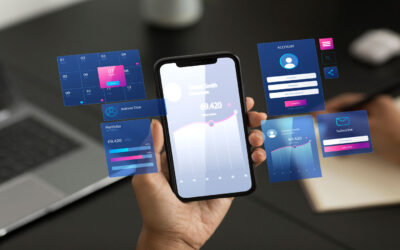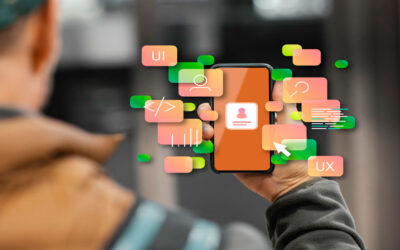Introduction
In recent years, iPhone app development has evolved rapidly, driven by advancements in technology and changes in user behavior. As we look ahead, several emerging trends are shaping the future of iPhone app development, presenting exciting opportunities for businesses and developers alike. In this blog post, we’ll explore some of these trends and the potential they hold for the future of iPhone app development.
Augmented Reality (AR) and Virtual Reality (VR) Integration
Augmented Reality (AR) and Virtual Reality (VR) technologies are transforming the way we interact with digital content, and their integration into iPhone apps opens up new possibilities. From immersive gaming experiences to interactive shopping platforms and virtual tours, AR and VR have the potential to revolutionize various industries. Developers can leverage Apple’s ARKit and other AR/VR development tools to create captivating experiences that blur the lines between the physical and digital worlds.
Artificial Intelligence (AI) and Machine Learning (ML) Integration
The integration of Artificial Intelligence (AI) and Machine Learning (ML) technologies into iPhone apps is another significant trend driving innovation in app development. AI-powered features such as intelligent chatbots, personalized recommendations, and predictive analytics enhance user experiences and streamline processes. With Core ML, Apple’s machine learning framework, developers can incorporate powerful ML models directly into their apps, enabling advanced functionalities without compromising performance or user privacy.
Internet of Things (IoT) Connectivity
The Internet of Things (IoT) ecosystem continues to expand, with an increasing number of connected devices entering the market. iPhone apps are playing a central role in IoT connectivity, serving as hubs for controlling and monitoring IoT devices seamlessly. Whether it’s smart home appliances, wearable devices, or connected vehicles, integrating IoT capabilities into iPhone apps enables users to interact with and manage their IoT ecosystem from anywhere, enhancing convenience and efficiency.
Voice Interface and Conversational AI
The rise of voice assistants and conversational AI is reshaping the way we interact with technology, and iPhone apps are no exception. Voice interface technologies such as SiriKit enable developers to integrate voice commands and natural language processing capabilities into their apps, facilitating hands-free interaction and enhancing accessibility. From voice-controlled smart home devices to voice-enabled productivity tools, the possibilities for voice interface integration are limitless.
Enhanced Privacy and Security Measures
With growing concerns about data privacy and security, users are demanding greater transparency and control over their personal information. In response, Apple has introduced stricter privacy guidelines and enhanced security features in its iOS platform. Developers must prioritize privacy and security in their app development process, implementing robust encryption, secure authentication mechanisms, and strict data handling practices to protect user data from unauthorized access and breaches.
Cross-Platform Development with SwiftUI
Apple’s SwiftUI framework is revolutionizing the way developers build user interfaces for iOS, macOS, watchOS, and tvOS apps. With its declarative syntax and seamless integration with Swift, SwiftUI streamlines the app development process and enables developers to create consistent, responsive user interfaces across multiple platforms. By embracing SwiftUI, developers can accelerate development cycles, reduce code complexity, and deliver superior user experiences across the Apple ecosystem.
Subscription-Based Business Models
Subscription-based business models are gaining traction in the app industry, offering developers a predictable revenue stream and users a more flexible payment structure. iPhone apps across various categories, including streaming services, fitness apps, and productivity tools, are adopting subscription-based pricing models to monetize their offerings effectively. Developers must focus on delivering ongoing value to subscribers and offering compelling subscription packages to retain users and drive sustainable revenue growth.
Conclusion
The future of iPhone app development is bright, driven by a convergence of emerging technologies, changing user expectations, and evolving market dynamics. By embracing these trends and seizing the opportunities they present, developers can create innovative, user-centric iPhone apps that delight users, drive business growth, and shape the future of mobile technology. As we embark on this journey of innovation and discovery, let’s harness the power of iPhone app development to unlock new possibilities and create a brighter future for all.
Search
Categories
- AI 3
- Analytics & Data Science 16
- Blogs 8
- Brand Identity 23
- Business 10
- CMS & LMS 22
- Development 1
- Digital Marketing 20
- Digital Signage 12
- E-commerce 6
- Education & E-Learning 1
- Enterprise solution 15
- Events 2
- Food & Grocery 1
- Internet of Things 9
- Mobile App Development 15
- News 5
- Open Source Development 12
- SEO Search engine optimization 2
- Software 1
- Staff Augmentation 3
- Uncategorized 24
- Web Design 1
- Web Development 19
- Web Security and Performance 19
- Website Development 2
- WordPress Development 3
Recent Posts
-
Les avantages de choisir un casino proposant des free spins attractifs pour les joueurs
-
Arlequin Casino et ses promotions exclusives qui transforment les jeux en ligne
-
Tendances actuelles des casinos Neosurf et leur impact sur l’industrie du jeu
-
مقارنة شاملة بين كازينوهات قطر التي تعتمد على استخدام VPN
-
Les bénéfices de l’utilisation de Paysafecard dans les casinos en ligne sans soucis


